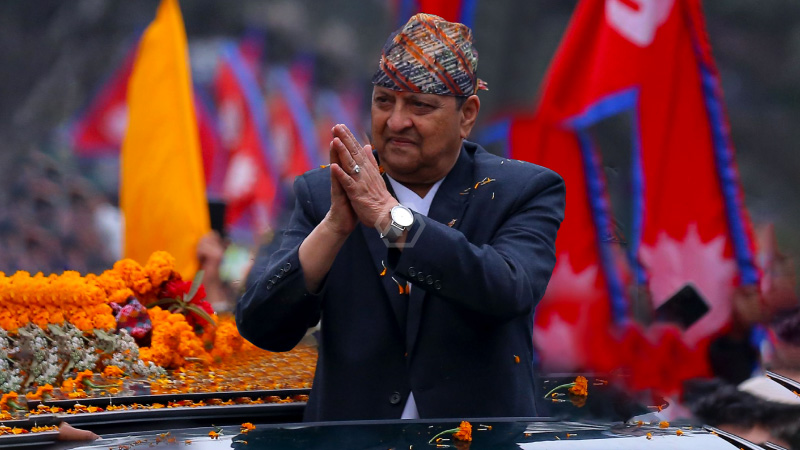- Massive protests demand return of King Gyanendra and reinstatement of Hindu state.
- Citizens express frustration with failed governance since 2008 republic shift.
- Political parties reject monarchy’s return, calling the republic irreversible.
Nepal’s capital Kathmandu witnessed a dramatic display of royalist resurgence as tens of thousands of demonstrators filled the streets, waving flags and calling for the return of the monarchy and the restoration of Hinduism as the state religion.
Despite the show of strength, Nepal’s political reality remains unchanged. The three major parties dominating parliament have reiterated their commitment to the republican system, which was codified in the 2015 constitution.
Crisis of Faith: Nepalis Demand Monarchy Amid Governance Failures
The recent protest in Kathmandu marks one of the most significant pro-monarchy demonstrations since Nepal’s royal family was sidelined 17 years ago. Chants urging King Gyanendra to “save the country” echoed through the city, highlighting public nostalgia for what some view as a more stable era under royal rule.
The economic strain is palpable in daily life. Protesters pointed to chronic unemployment, mass labor migration, and stagnant development as key reasons behind their disenchantment with Nepal’s elected governments. Many young Nepalis continue to seek work abroad, remittances from whom form a crucial pillar of the national economy.
Religious identity is also at the heart of the protests. Nepal’s transition to secularism in 2008 alienated many conservative citizens who believe Hinduism should remain central to the nation’s identity. The royal institution had long been seen as a protector of Nepal’s Hindu traditions.
Meanwhile, ruling political parties have responded firmly, stating that the monarchy is “consigned to history.” With nearly two-thirds control in parliament, they maintain the current constitutional framework and show no intention of entertaining a reversal. However, the protests serve as a warning that political legitimacy may erode further if governance issues persist.
The growing royalist sentiment in Nepal is less about nostalgia and more a reflection of widespread disillusionment with the status quo. Unless elected leaders take urgent steps to restore trust and deliver results, the monarchy may continue to regain ground—if not in law, then in spirit.
“When the present fails to inspire hope, people often turn to the past for comfort.”
— This quote captures the essence of the Nepali protests, where dissatisfaction with current governance fuels a longing for monarchical rule.



